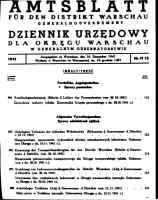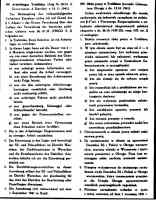The Treblinka labour camp (known as Treblinka I) was established in
late 1941. It was located around 2 km south of the extermination
camp Treblinka II. Today the large gravel pit of this forced labour camp is still visible. Thousands of
Poles (Jews and non-Jews) were forced to dig in the mine.
 |
| Map |
 |
| Air Photo |
From the extermination camp Treblinka II the paved "Black Road" and a railway track led to the penal camp.
Because a road, railway connection and labour camp already existed in this dense forest, the Germans choosed
the location for setting up the extermination camp too. Jews from nearby villages and cities as well as Jews
from Treblinka I were forced to build the extermination camp.
At any given moment, on the average from 1,000-1,200 inmates were detained in the camp, their
composition was constantly changing. The inmates worked in the gravel pit and at loading railway
cars in
Malkinia station. Some of them were employed in the camp workshops and the women on
the camp farm. The regime was one of terror and starvation. More than 20,000 persons have passed
through the camp. More than half of them have died of starvation, under torture, or were shot.
The camp was wound up late in
July 1944, when the Soviet Army was approaching.
Watchtowers and barbed wire fences prevented the inmates to escape. The SS compound was located
between the prisoners camp and the gravel pit (see map).
 |
| Barrack Foundations |
 |
| Swimming Pool |
 |
| Gravel Pit |
Today some areas of the former camp are cleared, grass covers the ground. Several remnants of buildings
are visible: concrete barrack foundations, the
ramp, and a swimming pool used by the SS men. A memorial asks the
visitor to remember the victims who perished here.
Perpetrators: Dingelmann, Theodor v. Eupen (camp commander),
Guthard, Hagen, Heinbuch, Heinrichs,
Werner Hinze (SS-Oberscharführer), Karol, Krause, Leopold Lanz (chief of workshops),
Lindecke, Alexander Mitter (SS-Unterscharführer), Josef Mitter, Karl Prefi (deputy commander),
Röge, Sauer (major of police), Franz Schottmann, Schwarz (SS-Unterscharführer, called "the hangman"),
Stumpfe ("the smiling death"), Swiderski ("the hammer virtuoso"), Weisshaar (SS-Rottenführer) and others.
See the list of all 90 Trawniki men!.

|

|
| Amtsblatt #1 |
Amtsblatt #2 |
© ARC 2005














